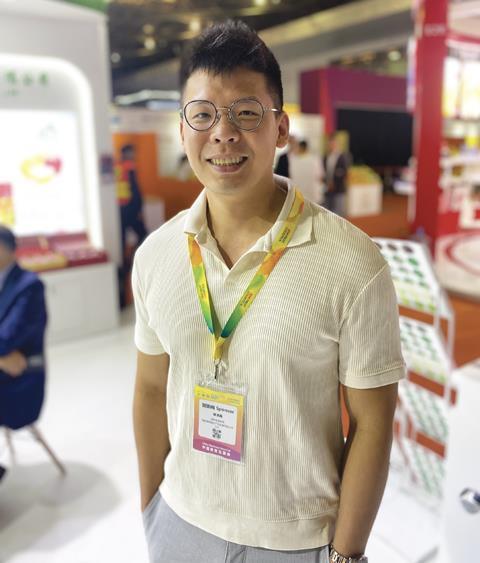Deputy general manager Sam Sin says the company is putting quality first as it builds its export business supplying a range of Chinese-grown fruits

Pagoda Global Fresh (PGF) is on a mission to build China’s reputation as an exporter of high-quality fruits.
Back in 2019, the group acquired Haiyang Chiang Mai Thai Agri-Products Co (HYJCT), a leading exporter of Chinese apples and pears for more than 25 years. In addition to shipping to long-haul markets such as Europe, the Middle East and South America, HYJCT has a strong presence across South-East Asia with its JCT brand, as well as the Wangshan brand in the Indonesia market.
But last year, PGF began exporting a full range of Chinese-grown fruits from the group’s supply sources. Sam Sin, whose family owned HYJCT, is heading up Pagoda’s export business.
“We’re targeting consumers who want good eating quality, and we’re mostly supplying the retail market,” he says. “Our product range includes blueberries, strawberries, kiwifruit, oranges, mandarins, grapes and more.”
Sin says Pagoda and HYJCT share the same vision to establish China’s reputation as a high-quality fruit exporter.
“In previous years, I think the perception in the international market was that China was not always in the top tier [on quality]. But as you can see recently, the quality of Chinese products is improving a lot.”
Sin cites Driscoll’s’ berry investments in the Yunnan region as an example of the quality benchmarks being established in China’s fruit industry.
“We believe that in the next three to five years, China is going to be the major supply source for South-East Asia in terms of agricultural products,” he says.
Chinese-grown grapes and mandarins have already made major inroads on markets in South-East Asia, Sin notes. Shine Muscat grapes are the most obvious example, now seen selling “all over South-East Asia”.
“If you talk with any importer in South-East Asia, I think they took at least 50 per cent fewer grapes from the US, Peru or Chile this year,” he says. “The transit time from these origins is around 25-30 days, but China can ship to Indonesia in a few days, and to Vietnam in less than 24 hours.”
Sin singles out blueberries as the product seeing the fastest volume growth for export. PGF already exports strawberries from its own farms in Dandong and Nanjing, while it has a network of blueberry suppliers around China.
“We can truck fruit to Hong Kong and Thailand, and we can ship by sea to Singapore and Malaysia,” he says. “This makes our product much more competitive than alternative origins like Morocco. It also enables us to harvest fruit at a higher level of maturity.”
One of the challenges for blueberry exports is the lack of phytosanitary protocols for market access, he adds. “Berries was not traditionally a big category in China’s fruit industry, so the government did not establish protocols with many other countries. This will take some time.”
Pagoda packs and grades its export fruit to the same high standards required by China’s fruit import market, according to Sin. He sees China’s rise as a high-quality supplier making conditions much more competitive for global suppliers to China and South-East Asia in the future. Indeed, he expects China to extend its influence globally.
“I’m proud to say that in the next five to ten years, China is going to be the biggest exporter of high-quality produce in the world,” Sin concludes.
This interview is taken from the July/August 2024 edition of Asiafruit. Pick up your copy at Asia Fruit Logistica



